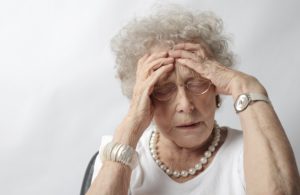Pain Insights That Are Especially Relevant Today

Pain isn’t “all in your head,” as some people dismissively say. However, the way we think about our pain can make a big difference!
In August 2020, a research team from Penn State University Center for Healthy Aging published a study on pain “catastrophizing.” They defined “catastrophizing” as “feeling an exaggerated helplessness or hopelessness” about pain, perhaps expressed in thought patterns like “the pain is terrible and it’s never going to get any better” or “I can’t stand the pain anymore.”
Negative Thoughts = Less Physical Activity
The study authors wanted to know how these thought patterns affected the activity level of the patients they studied, all of whom were living with knee arthritis. They found that these thoughts made it less likely that a patient would be active, no matter what degree of pain they were experiencing at a given time. “In other words,” said Prof. Ruixue Zhaoyang, “how patients think about their pain, rather than the level of experienced pain, had a more powerful impact on their daily physical activity.”
The team says that these findings could apply to people with any type of pain. The insight is important because physical activity is a top factor in reducing pain—and, catastrophizing could create “a domino effect of sedentary behavior, followed by even more pain catastrophizing.”
The good news is that there are ways to address catastrophizing and subsequent inactivity, making it a modifiable factor in pain. But in 2020, this might be especially challenging for many of us! Our usual exercise routines might be off limits, and we’re likely to already be feeling a lot of overall anxiety.
In an earlier study, the Penn State team demonstrated a connection between the amount of pain people perceived and their relationship with their spouse. They found that patients who experienced marital strife one day had higher pain levels the next day. And, as might be expected, the heightened pain could cause irritability that worsened tensions between the couple. “This starts to suggest a cycle where your marital interactions are more tense, you feel like your symptoms are more severe, and the next day you have more marital tension again,” noted study co-author Prof. Lynn Martire.
This could certainly be more of an issue for couples today who are having a greater degree of togetherness than they are accustomed to, for better or worse—and who might also be facing a raised level of economic, political and family stress.
Counseling is available to help people understand and cope with pain and anxiety. The second Penn State study brings to mind that couples counseling might help, as well! While their offices may be closed at present, or clients may be apprehensive about in-person sessions, many counselors are currently offering tele-sessions.
Alternative Treatments for Pain
Dealing with emotional health is just one way to cope with and reduce chronic pain. Doctors today offer a wide variety of pain treatment resources. Not so long ago, opioid drugs were often the treatment of choice, but with today’s greater understanding of the dangers of these drugs, experts are more likely to offer alternative treatments, including:
- Non-opioid medications, such as ibuprofen, naproxen and acetaminophen
- Physical therapy, including hands-on treatments (massage, ultrasound, hot and cold treatments), biofeedback, and training to help patients use their bodies in ways that reduce pain
- Meditation, yoga, tai chi and other mind-body practices
- Managing painful health problems with regular healthcare appointments, and following the doctor’s recommendations about treatments, medications, nutrition, exercise and other lifestyle choices.

